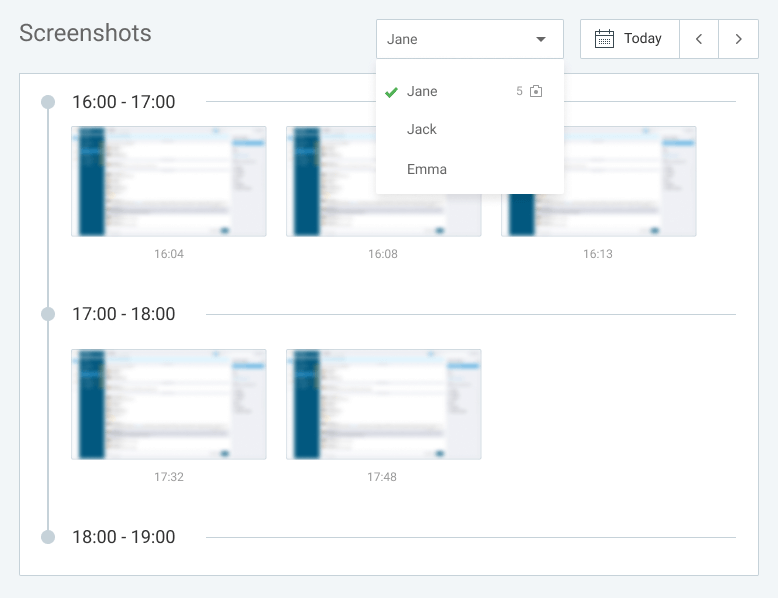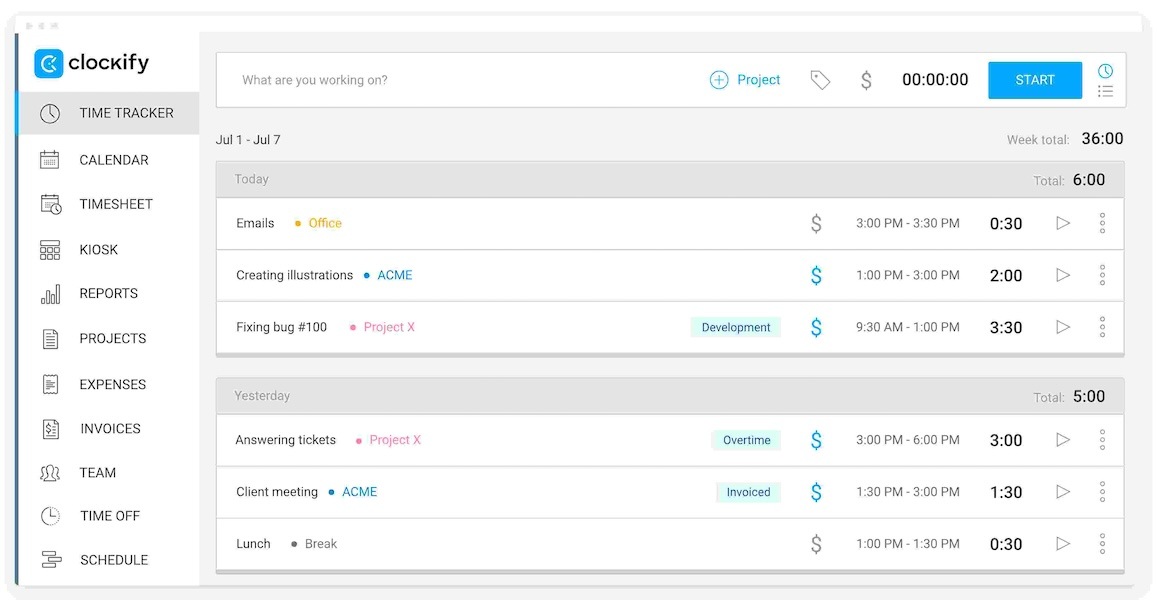The line between employee time tracking and monitoring is becoming more and more blurred. That’s because modern time trackers offer invasive features that shatter employee trust.
Due to privacy concerns, plenty of workers don’t want to use such software.
In this article, we’ll cover how you can introduce a time tracking system without invading employee privacy.

#1: Familiarize yourself with employee monitoring laws
Generally speaking, time tracking is legal and required by law in some states. However, many time tracking software solutions come with advanced monitoring features. And that’s where it gets a bit murky.
For example, the Electronic Communications Privacy Act of 1986 doesn’t allow the interception of electronic communications — but with defined exceptions.
To get a clearer picture, let’s take a look at privacy laws at the state level.
California employers have the legal right to monitor company-owned devices, and this is generally the case in other states. However, it’s a different story when it comes to informing employees.
Only the following US states mandate that employers need to notify the staff about tracking their work activity:
- Connecticut,
- Delaware,
- New York, and
- Texas.
To avoid legal issues and breaking employee trust, make sure you comply with all the time tracking and monitoring laws in your state.
💡 CLOCKIFY PRO TIP
If you’re managing an international team, you’ll also need to get acquainted with time tracking around the globe. This article is a good starting point:
#2: Inform employees about what you track
An Express VPN survey revealed that 59% of employees feel anxious and/or stressed about their employer monitoring their online activity. Therefore, you can assume that at least some of your employees might feel reserved about a time tracking system with monitoring features.
Now, we’ve already explained that whether you need to disclose to the employees that their work is being monitored depends on the location. Still, it’s always best to explain why you need to implement a time tracking system and what you’re tracking.
One example of an employee-friendly time tracking tool is Clockify — it notifies users when monitoring features are enabled.
For instance, if you turn on the screen capture option, your employees will receive a notification.
Plus, all the screenshots in Clockify are blurred and have low resolution by default. If you leave the default settings, your workforce can rest assured that no sensitive information reaches the wrong person.

Another feature you can enable or disable is GPS tracking, depending on your business needs.
For example, if your employees always work from home rather than in the field, you probably won’t need this option. In fact, enabling this feature for no valid reason may make employees feel like you don’t trust them.
Track time privately in Clockify
Being transparent with your team helps relieve their anxiety about being monitored. That way, you build trust and get accurate time tracking data while respecting employee privacy.
#3: Keep the tracked data secure
Let’s say you did everything to ensure you tracked only what was necessary for business purposes and did so only during work hours. Employee privacy may still be at risk if you don’t keep the tracked data secure or if an unauthorized person gains access to it.
Instead, use a trusted and secure time tracking app that lets you control who can see certain data.
Clockify keeps employees’ tracked hours private by limiting who this data is visible to.
For instance, you can hide the view of tracked hours from regular users, permitting them to see their own time only. That way, each employee will be sure that no one else can see their data, except for you as their manager.

Therefore, the key to keeping employee data secure is to avoid sharing data without a valid reason.
#4: Allow employees to choose options to track time
When introducing time tracking to your employees, ask them what they believe is reasonable to track and what isn’t. This way, you can set up a time tracking system your employees are comfortable with.
On top of that, you can let workers pick an app with multiple options for tracking time, so that everyone can select the option that works for them.
Depending on the software, you may find the following time tracking features useful:
- Timer — tracks time spent on projects in real time,
- Timesheet — lets users quickly enter time for the entire week,
- Manual mode — allows users to manually enter the time they spent on a particular project, and
- Auto tracker — tracks how much time is spent on what app.

Finally, use one app to enable all the applicable time tracking options and have your employees test them out to see what they prefer.
💡 CLOCKIFY PRO TIP
Here’s an article with different types of time tracking software, so that you can make an informed decision on what time tracking options to introduce to your team:
#5: Use a non-invasive time tracker like Clockify
Clockify is a convenient tool for employers who don’t need extensive monitoring features.
The app is also very employee-friendly, as its features are geared towards accurate time tracking. Any monitoring features it has can be disabled.
For illustration, you can turn off screen capturing if you don’t need to monitor employees’ screens.
Moreover, if you enable the screen capture feature, regular users can delete personal screenshots for time entries that haven’t been approved or locked.
Not to mention, you can assign roles to users and give them different permissions. This allows you to control who sees certain information.


